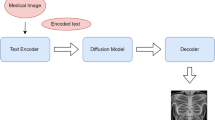Abstract
This paper presents an efficient data hiding technique capable of providing improved visual quality of watermarked images, besides having the ability to detect the tamper, if any. It is a spatial domain approach in which major emphasis is on improving the visual quality rather than increasing the PSNR or the embedding capacity. The medical images have been divided into Region of Interest (ROI) and Non-Region of Interest (NROI). Bringing out details that lie within the low dynamic range is very important in medical images for effective diagnosis. ROI being diagnostically critical region is enhanced using contrast stretching and subsequently, data is reversibly embedded into the peak bins of ROI. Only those peak bins are employed for reversible data embedding that have an adjacent empty bin to overcome the problem of overflow and underflow. In NROI, the uniform intensity and redundant information region, Least Significant Bit (LSB) embedding is employed for increasing the payload. For tamper detection, a fragile watermark has been embedded in the ROI. To evaluate the scheme various parameters like peak signal to noise ratio (PSNR), No-Reference Quality Metric for contrast-distorted images (NR-CDIQA) and Structural Similarity Index Matrix (SSIM) have been calculated. The experimental results show a remarkable increase in visual quality compared to state-of-art.












Similar content being viewed by others
References
AM Alattar (2003). “Reversible watermark using difference expansion of triplets”, in: Proceedings IEEE International Conference on Image Processing. Barcelona, Spain, pp.501–504
AM Alattar (2004). “Reversible watermark using difference expansion of quads”, IEEE International Conference on Acoustics, Speech, and Signal Processing (ICASSP’04), vol. 3, pp. iii −377
Alattar AM (2004) Reversible watermark using the difference expansion of a generalized integer transform. IEEE Trans Image Process 13(8):1147–1156
JM Barton (1997). “Method and apparatus for embedding authentication information within digital data,” U.S. Patent No. 5,646,997
Y Fang, K Ma, Z Wang, W Lin (2014). “No-Reference Quality Assessment of Contrast-Distorted Images Based on Natural Scene Statistics”, IEEE Signal Processing Letters 22, no.7, pp. 838–842
Gao G, Shi YQ (2015) Reversible data hiding using controlled contrast enhancement and integer wavelet transform. IEEE Signal Processing Letters 22(11):2078–2082
S Gull, NA Loan, SA Parah, JA Sheikh and GM Bhat (2018). “An efficient watermarking technique for tamper detection and localization of medical images”, J Ambient Intell Humaniz Comput, pp.1–10
Hu J, Li T (2015) Reversible steganography using extended image interpolation technique. Comput Electr Eng 46:447–455
Khan A, Siddiqa A, Munib S, Malik SA (2014) A recent survey of reversible watermarking techniques. Inf Sci 279:251–272
Lin CC, Tai WL, Chang CC (2008) Multilevel reversible data hiding based on histogram modification of difference images. Pattern Recogn 41(12):3582–3591
Luo L, Chen Z, Chen M, Zeng X, Xiong Z (2010) Reversible image watermarking using interpolation technique. IEEE Transactions on Information Forensics and Security 5(1):187–193
Z Ni, YQ Shi, N Ansari and W Su (2006). “Reversible data hiding,” IEEE Transactions on circuits and systems for video technology, IEEE, vol. 16,no. 3,pp. 354–362
SA Parah, F Ahad, JA Sheikh, NA Loan, GM Bhat (2017). “Pixel Repetition Technique: A High Capacity and reversible data hiding method for E-Healthcare applications”. In Intelligent Techniques in Signal Processing for Multimedia Security, pp. 371–398), Springer, Cham
OS Pianykh (2009). “Digital imaging and Communications in Medicine (DICOM): aPractical Introduction and Survival Guide”, Springer Science & Business Media
AF Qasim, F Meziane, R Aspin (2018). “Digital watermarking: applicability for developing trust in medical imaging workflows state of the art review”, Computer Science Review 27, Elsevier, pp 45-60
YQ Shi, X Li, X Zhang, HT Wu and B Ma (2016). “Reversible data hiding: advances in the past two decades,” IEEE Access, IEEE, vol. 4, pp. 3210–3237
DM Thodi and JJ Rodriguez (2004). “Prediction-error based reversible watermarking,” In Image Processing, ICIP’04. 2004 International Conference, IEEE, vol 3, pp 1549–1552
DM Thodi and JJ Rodríguez (2007). “Expansion embedding techniques for reversible watermarking,” IEEE transactions on image processing, IEEE, vol. 16, no. 3, pp. 721–730
Tian, Jun (2003). “Reversible data embedding using a difference expansion,” IEEE transactions on circuits and systems for video technology, IEEE, vol. 13, no. 8, pp. 890–896
Tsai P, Hu YC, Yeh HL (2009) Reversible image hiding scheme using predictive coding and histogram shifting. Signal Processing 89(6):1129–1143
Wang Y, Gong D, Lu B, Xiang F, Liu F (2018) Exception handling-based dynamic software watermarking. IEEE Access 6:8882–8889. https://doi.org/10.1109/ACCESS.2018.2810058
Wu HT, Dugelay JL, Shi YQ (2014) Reversible image data hiding with contrast enhancement. IEEE Signal Processing Letters 22(1):81–85
Yang Y, Ming J (2016) Image quality assessment based on the space similarity decomposition model. Signal Process 120:797–805
Y Yang, W Zhang, D Liang, and N Yu (2018). “A ROI-based high capacity reversible data hiding scheme with contrast enhancement for medical images,” Multimedia Tools and Applications, Springer, vol. 77, no 14, pp. 18043–18065
W Zhang, X Hu, X Li, and N Yu (2013). “Recursive histogram modification: establishing equivalency between reversible data hiding and lossless data compression,” IEEE transactions on image processing, IEEE, vol. 2, no. 7, pp. 2775–2785
Acknowledgments
The authors would like to thank the Department of Science and Technology (DST) New Delhi, Government of India for providing financial support under the DST Inspire Fellowship Scheme.
Author information
Authors and Affiliations
Corresponding author
Additional information
Publisher’s note
Springer Nature remains neutral with regard to jurisdictional claims in published maps and institutional affiliations.
Rights and permissions
About this article
Cite this article
Showkat, S., Parah, S.A. & Gull, S. Embedding in medical images with contrast enhancement and tamper detection capability. Multimed Tools Appl 80, 2009–2030 (2021). https://doi.org/10.1007/s11042-020-09732-6
Received:
Revised:
Accepted:
Published:
Issue Date:
DOI: https://doi.org/10.1007/s11042-020-09732-6




